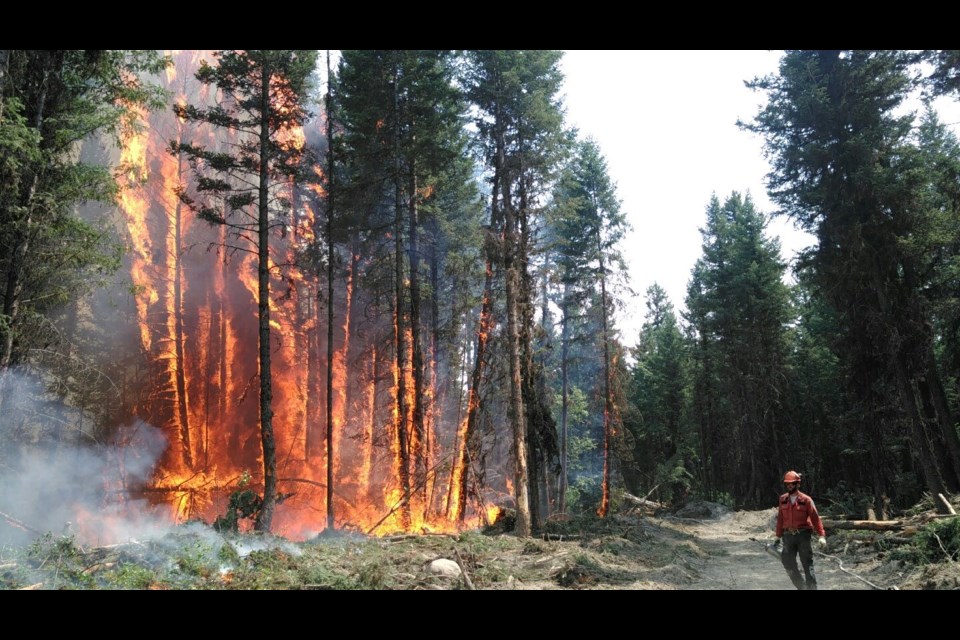Quesnel’s Forestry Initiatives Program has reduced wildfire risk in 230 hectares of forested areas surrounding the community with funding available through the Forestry Enhancement Society of B.C.
“That was on the radar for the people who live in Quesnel for quite awhile,” said FESBC executive director Steve Kozuki. “What the fires in 2017 and 2018 did, I think, was it really sparked a sense of urgency. The Quesnel project ticked a lot of boxes for fast funding.”
FESBC has so far provided $1.7 million for the Quesnel program since 2018. Wildfire risk reduction was the top priority but Kozuki said the plan also earned high marks for incorporating recreational trails and connecting them to logging roads in the area to improve access. The project also maintained the visual quality of the area, leaving plenty of trees intact. Now that the area has been opened and more sunlight is reaching the ground, deer and songbird populations in the area have increased. It also earned credit for collecting biomass fibre that was used to make wood pellets. Kozuki said the project was also well-supported in the community.
Quesnel had an innovative approach to forestry enhancement but Kozuki says that doesn’t mean that FESBC project will work in every community. He said each project is proponent-driven and what the program provides will depend on what each community identifies as its priorities.
“We rely on local people in local communities with local experts in their own backyards to tell us what they think should be done,” said Kozuki. “We evaluate those proposals and we’re proactive and we’ll work with them.”
The Quesnel enhancement project utilizes smaller more precise long-arm harvesting equipment more commonly used in Europe of Eastern Canada, which leaves less of a footprint on the landscape. It also promotes better ecological resiliency than traditional harvesting methods such as clear-cutting with a feller-buncher. But with the lack of a specialized workforce, there are regulatory issues stalling progress, said former Quesnel mayor Bob Simpson..
“We have developed in Quesnel an approach to try innovative forest practices where we can actually demonstrate to people some of the new harvesting techniques we want to do with new equipment but WorkSafeBC, unfortunately, their certification is based on the clear-cutting model, not selective harvesting model, so we can’t get the equipment certified,” Simpson said.
“WorkSafe has a regulation that prevents us from using this equipment without some pretty significant modifications. You almost need a forest tech position running the equipment because they’re actually making forestry decisions while they’re running the equipment.”
The land identified as part of the wildfire interface zone around Quesnel is 65 per cent privately-owned and the city is working to become recognized as a FireSmart community to access resources to help private landowners get funding for fire mitigation.
Simpson said the city is on the verge of getting a community forest designation and the land base under that protection will be under license for city staff and First Nations to manage to avoid potential harvesting conflicts with BC Timber Sales or West Fraser Timber licensees.



